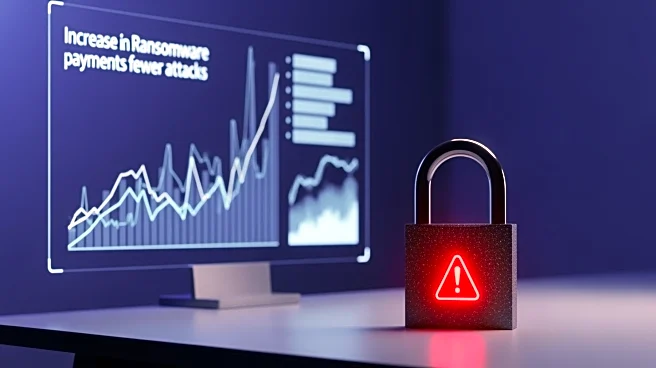What's Happening?
Despite a nearly 25% year-over-year decline in ransomware incidents, organizations impacted by ransomware intrusions paid an average ransom of $3.6 million this year, a 44% increase from last year. The
healthcare and government sectors provided the highest ransoms. More sophisticated ransomware operations and an increasingly broad attack surface have fueled the surge in ransom payments. Public cloud infrastructure, third-party integrations, and generative AI apps were noted as leading attack surfaces, while phishing, software flaws, and supply chain compromises were primary intrusion vectors.
Why It's Important?
The increase in ransom payments despite fewer attacks highlights the growing sophistication of ransomware operations and the vulnerabilities in current security measures. Organizations must prioritize comprehensive cybersecurity strategies, including attack surface mapping, vulnerability discovery, and internal network traffic monitoring, to mitigate the risks associated with ransomware. By enhancing visibility and response capabilities, organizations can reduce the impact of ransomware incidents and protect their assets.
What's Next?
Organizations may need to invest in advanced security solutions and training programs to enhance their defenses against ransomware. Implementing robust monitoring and detection tools can improve response times and reduce downtime caused by ransomware incidents. As ransomware operations continue to evolve, ongoing vigilance and adaptation of security protocols will be crucial in defending against these threats.
Beyond the Headlines
The surge in ransom payments underscores the broader challenge of balancing security investments with the evolving threat landscape. Organizations must remain proactive in updating their security measures and educating employees to effectively combat sophisticated ransomware operations. This approach can support long-term business success and resilience against cyber threats.











